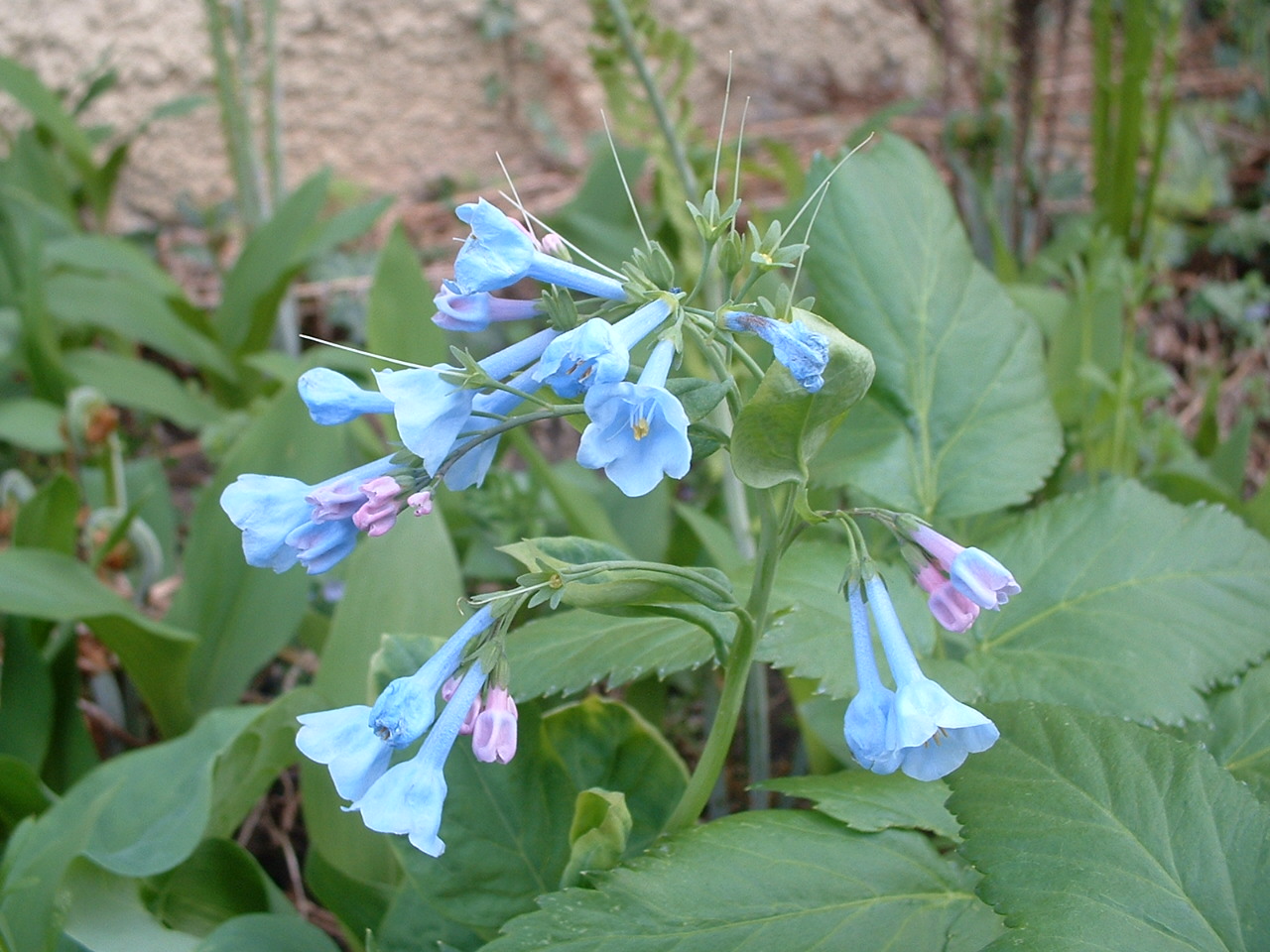 Virginia Bluebells (Mertensia virginica) have long populated my earliest memories of falling in love with spring flowers ... along with deeply hued purple wood violets (as weedy and invasive as they can be), Lily of the Valley, and yes, even the humble, yet brilliant dandelion. These were the kind of flowers I collected on spring walks to take home to mom ... or to adorn the May baskets we used to deliver on May Day ... in sum, they just plain heralded the arrival of warmer weather and the promise of even more colorful flowers to come.
Virginia Bluebells (Mertensia virginica) have long populated my earliest memories of falling in love with spring flowers ... along with deeply hued purple wood violets (as weedy and invasive as they can be), Lily of the Valley, and yes, even the humble, yet brilliant dandelion. These were the kind of flowers I collected on spring walks to take home to mom ... or to adorn the May baskets we used to deliver on May Day ... in sum, they just plain heralded the arrival of warmer weather and the promise of even more colorful flowers to come.Where I spent my childhood, we had several fairly extensive stands of them underneath the ancient grape vines planted decades before by our house's previous (spinster) owners ... and each spring I can remember waiting for the Bluebells to bloom ... and apparently the vines were just the perfect spot for them, since we never lacked an abundance of these ephemeral spring beauties.
These days however, in the midst of the city, Bluebells aren't as common as they used to be, though we know of several spots where they abound freely, which always gives us ideas of clandestine nighttime raids with trowels to liberate a few of them from their patches along the street and give them a more expansive home in the woodland portion of our garden. But theft of flora, bad karma as it is, has always prevented us from actually taking action on that idea.
Our gardening philosophy strictly maintains that gardening means sharing. In other words, for us, a flower freely given in the spirit of increasing its reach and population means that a plant shared usually means a better outcome for the plant, as well as the gardener(s) involved. And as much as we would love to exponentially increase our humble population of Bluebells, we resist the temptation to purloin them, and instead content ourselves with our small, yet gradually increasing numbers. The two or three small stands we have originally came to us from our gardening sensei Frank, who has also established other flowers in our gardens (notably the pink papaver somniferum poppies that abound in late spring). Though you can readily purchase Bluebells from garden centers and nurseries, it seems to us that such a native should really come to the garden from a place nearby where they have thrived ... and that's probably the reason we never have dug them or bought them, because knowing that the ones we have came from Frank originally means more than just sheer numbers of flowers to us. So ... we patiently tend to the few we now have and look forward to more of them increasing over time, as have so many of the original plants we have planted here.
To our mind, they typify one of the most prized denizens of a woodland setting, thriving in semi-shade among ferns and other shade lovers ... and the plant pictured is happily at home amidst Ostrich Plume Ferns, Lily of the Valley and Angelica. Technically referred to as an ephemeral plant, they don't last long after blooming, and the foliage is usually gone by the end of May, if not sooner. But if you know where to look, at the right time in spring, you can always find them again when they return ... when they signal the promise of more greeness to come in short order.
Photo Courtesy of Fernymoss







2 comments:
Those are gorgeous IVG! And on the link, it says they are members of the borage family -- is that the borage ... the cucumber-tasting-flower borage?
I can see why you'd love to have a large patch of them ...
Very nice photo by Fernymoss too!
Yep, same family of plants, though I've no idea about whether they're edible or tasty. Must be a pretty large family of plants as the foliage and blooms of bluebells would never remind me of borage. That was a surprise to me too when I read that at the link... OH, and they claim they get 1 1/2-2 Ft tall? Never seen one that big... these usually top out at 6-7 in. Guess they must grow em bigger in IL.
Post a Comment